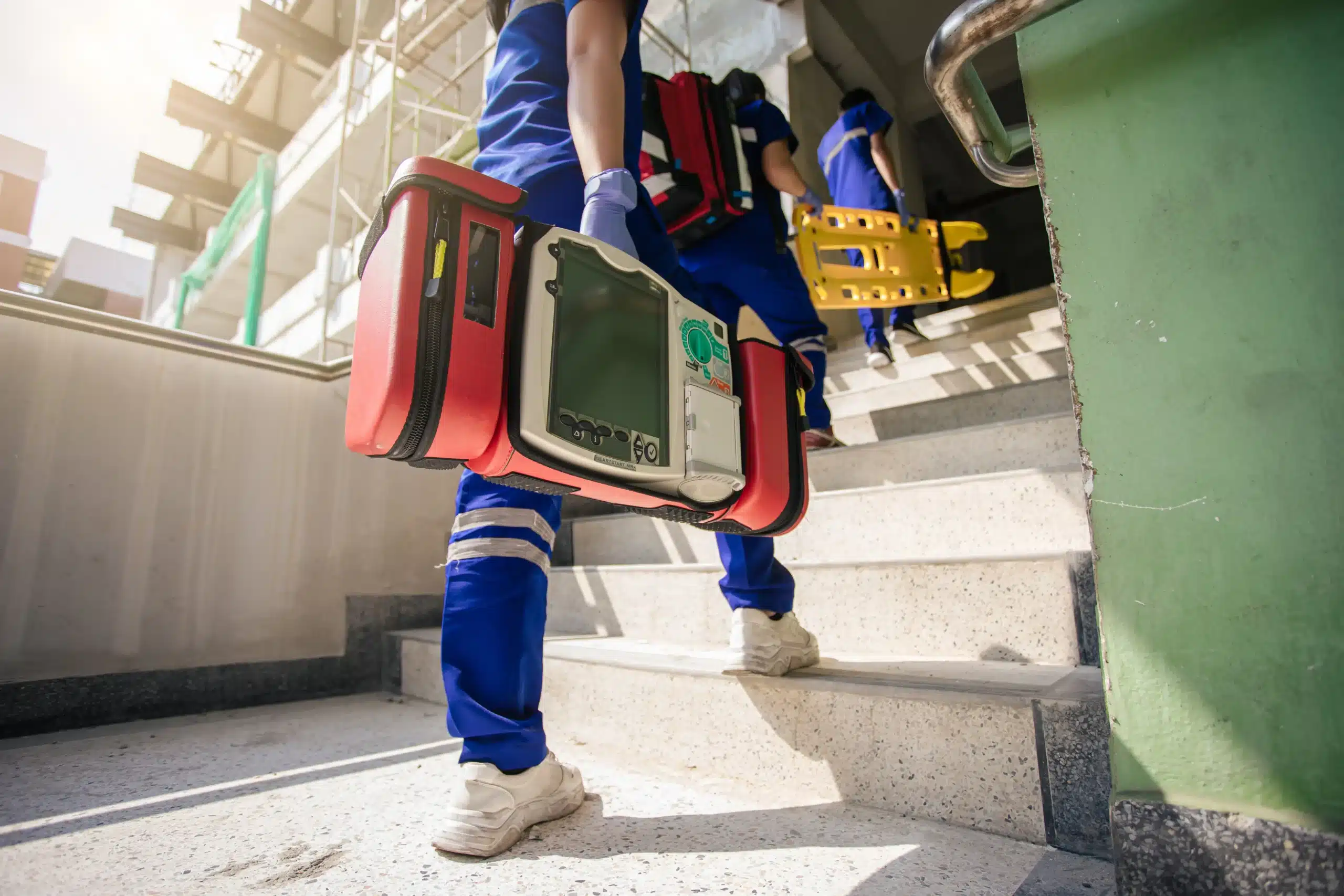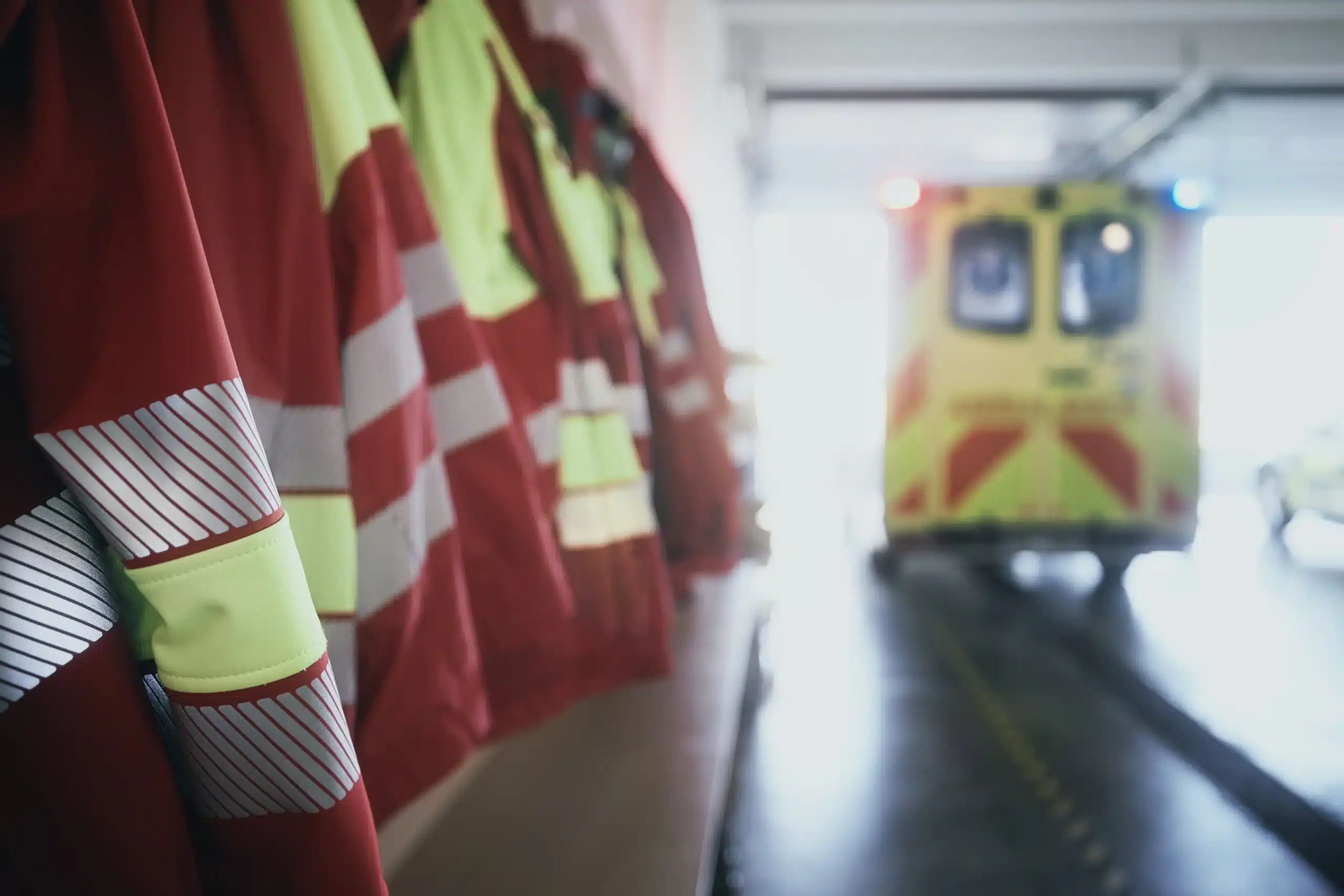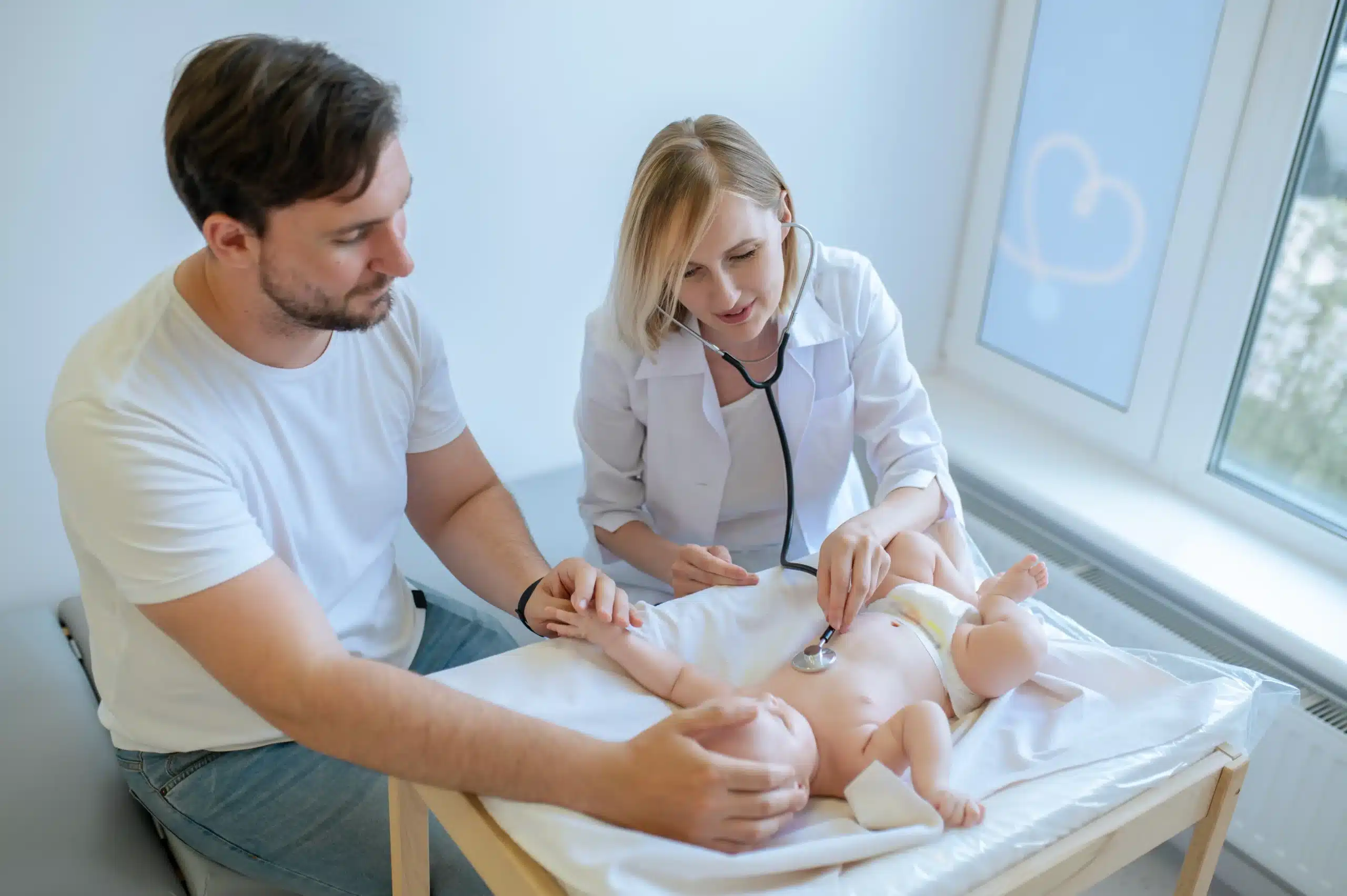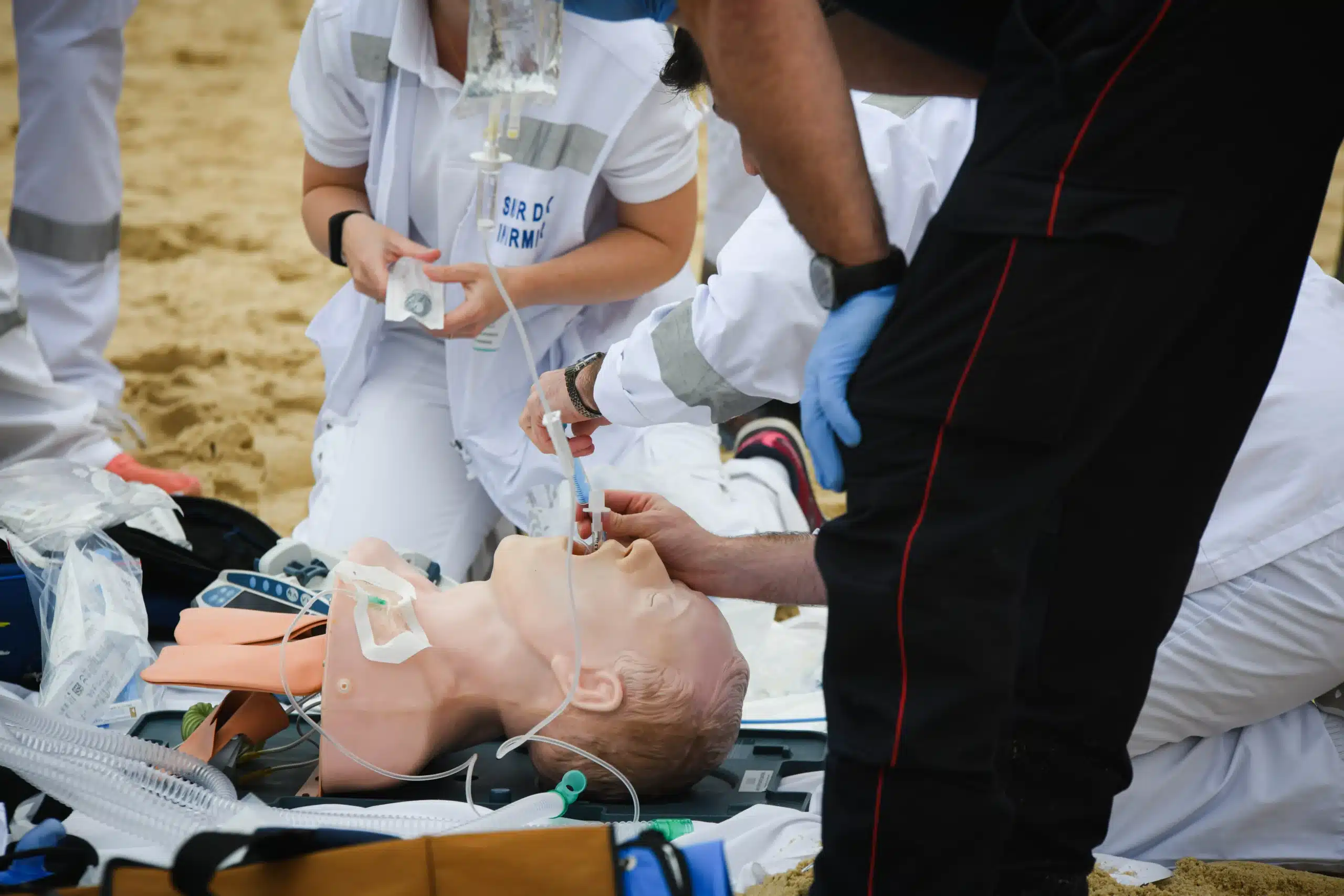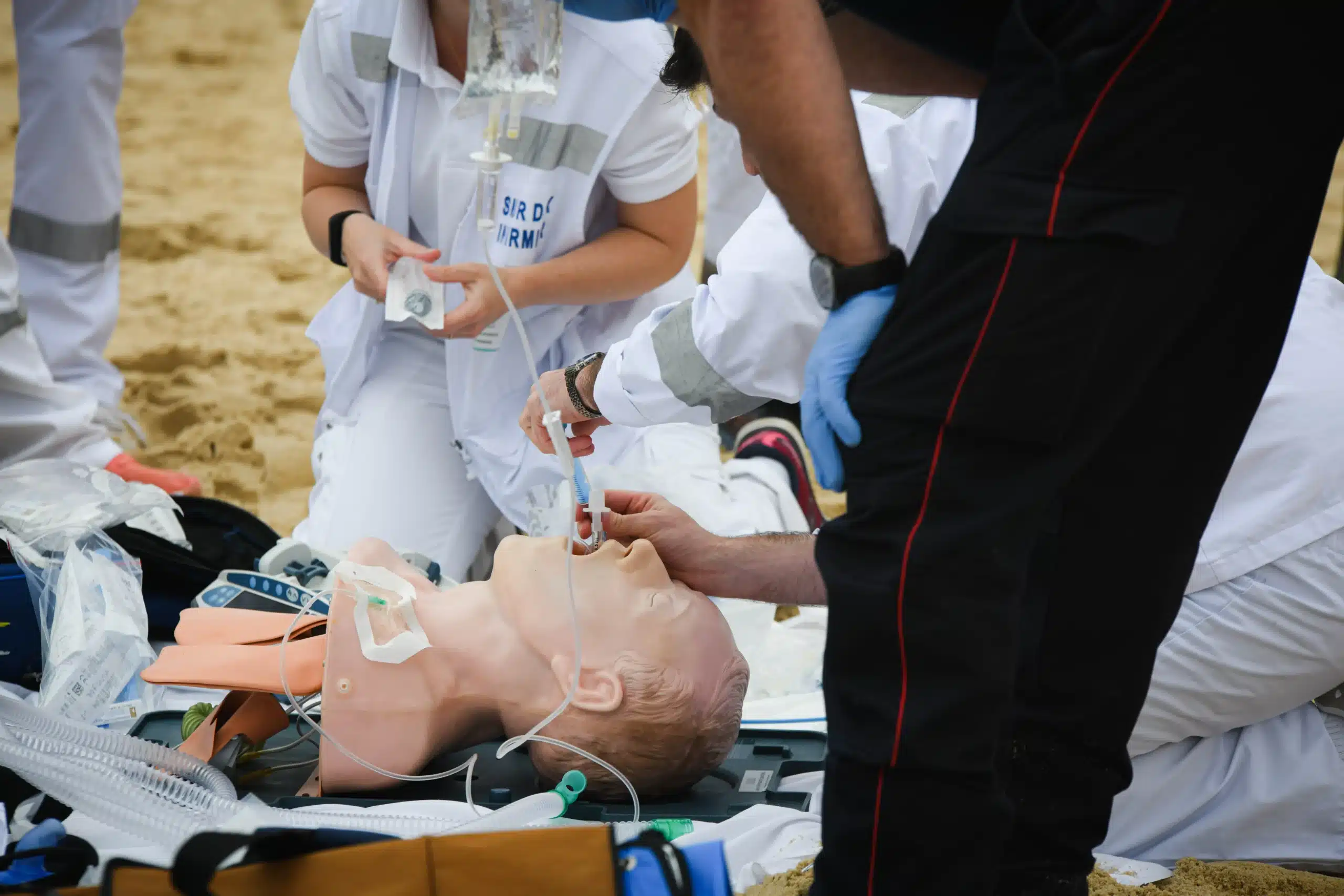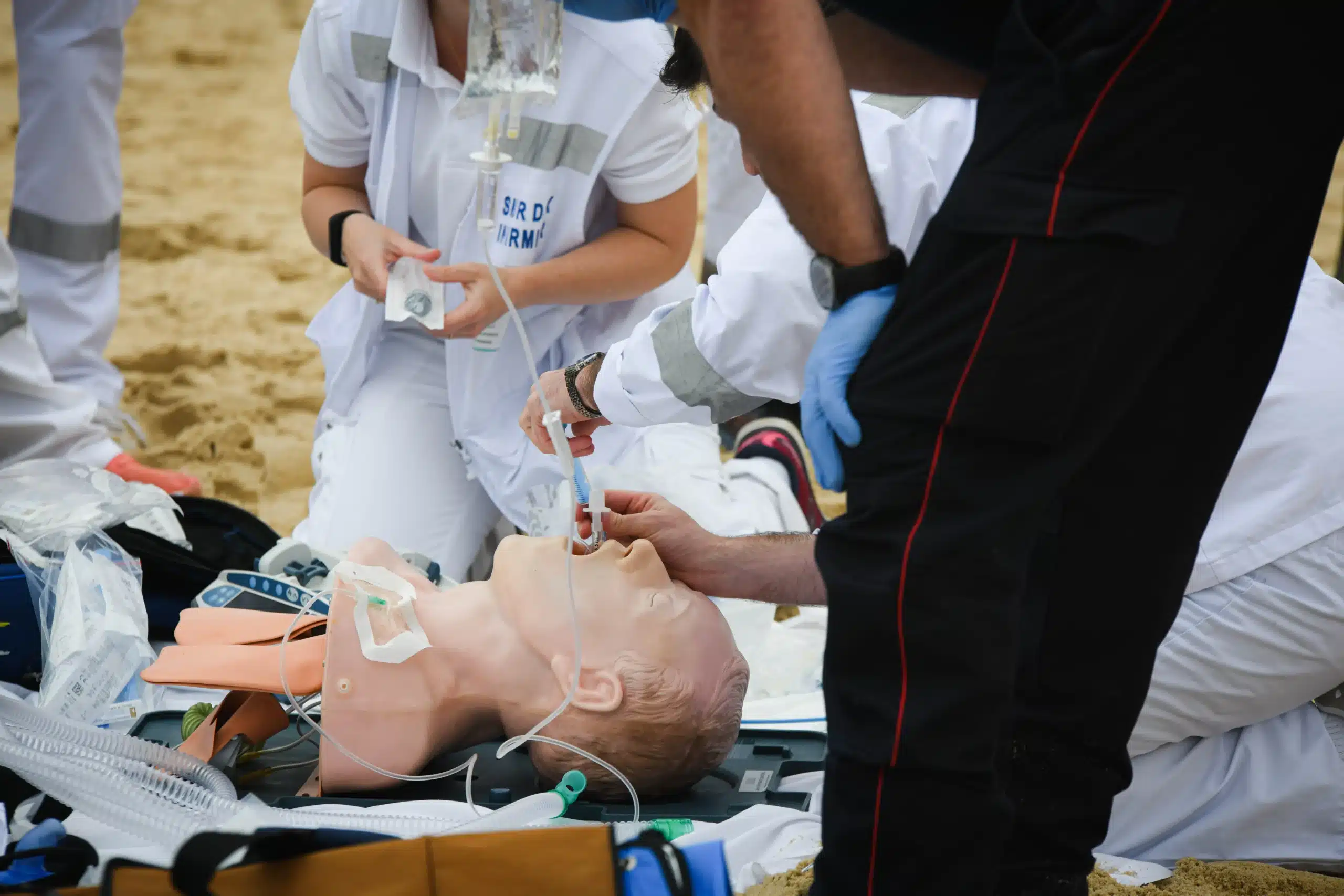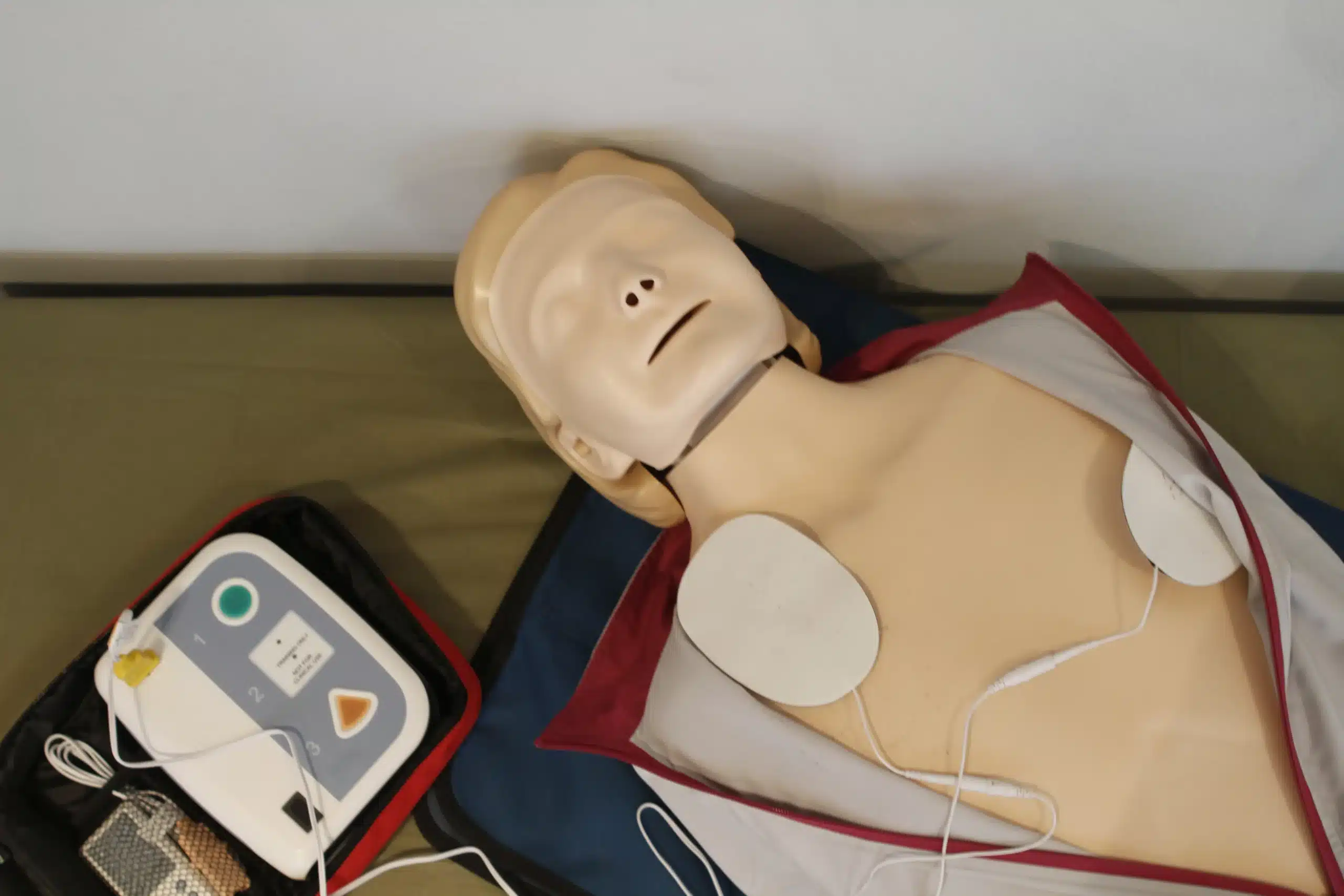Emergencies can happen anytime, anywhere. Are you prepared to respond? BLS training provides the skills and knowledge to act quickly and effectively in life-threatening situations. This guide will walk you through the essentials of BLS, including what the training entails, how to find “bls training near me,” and what to look for in a quality program. We’ll also discuss the importance of AHA certification and the role of a qualified instructor. Whether you’re a healthcare worker, a concerned parent, or simply someone who wants to make a difference, this guide will help you find the right BLS training to meet your needs.
Key Takeaways
- BLS certification provides essential life-saving skills: Learn CPR, AED use, and how to recognize medical emergencies, giving you the confidence to respond effectively in critical situations.
- Choosing the right BLS course is crucial: Consider factors like cost, location, and the reputation of the training center. Prioritize AHA-certified courses with experienced instructors who provide ample hands-on practice.
- Investing in quality BLS training empowers you to make a difference: Whether for personal preparedness or professional requirements, BLS equips you with the skills to act quickly and potentially save a life.
What is BLS Training & Who Needs It?
What is Basic Life Support (BLS)?
Basic Life Support (BLS) is a crucial set of life-saving medical procedures used in emergencies like heart attacks, strokes, near-drowning, and other situations where someone stops breathing or their heart stops beating. It goes beyond basic first aid and focuses on maintaining a person’s airway and providing oxygen through techniques like CPR (cardiopulmonary resuscitation) and rescue breathing. BLS also covers using an AED (automated external defibrillator). Think of BLS as the bridge that keeps someone alive until paramedics or other advanced medical help arrives. It’s the immediate response that can dramatically improve the odds of survival. For more information about BLS, visit the American Health Training website.
What will I learn in BLS training?
In a BLS certification course, you’ll get hands-on training in core life-saving techniques. You’ll learn how to perform CPR on adults, children, and infants, adapting your approach for each age group. The course covers how to recognize the signs of a heart attack or stroke and clear a blocked airway caused by choking. You’ll also learn how to use an AED safely and effectively. These skills empower you to respond confidently and competently in critical situations.
Who should get BLS certified?
BLS certification is valuable for anyone who wants to be prepared for a medical emergency. It’s especially important for healthcare providers, like doctors, nurses, and EMTs, who need this training as a cornerstone of their practice. Other professionals who work with children, like teachers, childcare providers, and camp counselors, also benefit from BLS certification. It’s also highly recommended for lifeguards, security personnel, and fitness trainers—anyone who might encounter an emergency on the job. If you want to be equipped to save a life, consider getting BLS certified. The American Heart Association offers BLS courses designed for a wide range of people, recognizing the importance of widespread BLS knowledge.
How to Find Great BLS Training Near You
Finding the right BLS training program involves a little research. You’ll want to consider factors like cost, location, schedule, and the training center’s reputation. Here’s a breakdown of some popular options:
Pleasanton CPR Classes (Safety Training Seminars)
Pleasanton CPR Classes, offered by Safety Training Seminars, is a locally owned and operated training center providing various certification courses, including BLS, ACLS, PALS, CPR, and First Aid. As a woman-owned American Heart Association Training Center, they emphasize customer satisfaction, offer a low price guarantee, and have classes available daily. This makes them a convenient option for busy professionals and those living in Pleasanton, Dublin, and San Ramon. They also offer group discounts, which can be a great option for workplaces or groups of friends certifying together. For those needing RQI classes, they offer those as well.
American Red Cross
The American Red Cross is a well-known and respected organization offering a range of safety training courses, including BLS certification and renewal. Their BLS training is designed for healthcare providers and other professionals who may need to respond to emergencies. Check their website to find courses near you.
American Heart Association
The American Heart Association provides BLS training through various authorized training centers across the country. Their courses adhere to the latest scientific guidelines and are recognized for their quality. You can search for AHA-certified training centers on their website, which allows you to filter by location and course type. This is a great way to find a reputable program that fits your needs.
Local Hospitals and Medical Centers
Many hospitals and medical centers offer BLS training courses to their staff and the community. These courses are often taught by experienced medical professionals and may offer access to advanced simulation equipment. Contact your local hospitals or check their websites for information on available BLS training programs.
Community Colleges and Universities
Community colleges and universities frequently offer BLS training as part of their continuing education programs or healthcare-related curricula. These courses can be a cost-effective option and may offer flexible scheduling. Check with your local institutions to see what they offer.
BLS Training: Costs & Options
So you’re ready to get your BLS certification—fantastic! One of your first questions is probably about the cost. Let’s break down BLS training costs and the factors that can affect them.
How much does BLS training cost?
BLS training costs vary, but you can generally expect to pay around $75 for a BLS CPR class. A combined CPR and First Aid class usually runs a little higher, closer to $90. These are just averages, of course. Pleasanton CPR Classes offers a low price guarantee, so you can feel confident you’re getting a good deal.
What affects BLS course costs?
Several factors influence the final price of your BLS training. The training provider sets their own pricing, and location can also play a role. Courses in larger cities sometimes cost a bit more. The course package itself also matters. Some courses include additional certifications, materials, or resources, which can affect the overall cost.
In-person vs. online BLS training: What’s the difference?
While some parts of your BLS training might be online, the American Heart Association (AHA) requires an in-person skills assessment. This means there aren’t any fully online AHA-certified BLS courses because hands-on practice is essential for developing these life-saving skills. Check out our AHA BLS course for more details. We also offer CPR and First Aid certification courses that follow the same guidelines.
Are there group discounts for BLS training?
If you need to train a team or group, look for providers that offer group discounts. Pleasanton CPR Classes offers discounts for group bookings, making it more affordable to get everyone certified. This is a great option for businesses, schools, or community organizations.
How to Evaluate BLS Training Quality
Not all BLS training is created equal. Before you sign up for a course, take some time to evaluate the quality of the program. Here’s what to look for:
Why is AHA certification important?
The American Heart Association (AHA) is a leading authority on CPR and emergency cardiovascular care. Choosing an AHA-certified BLS course ensures you’re learning the most up-to-date, evidence-based practices. This certification is widely recognized and respected, holding weight with employers and healthcare organizations. It also means your instructor has met the AHA’s rigorous training standards.
What makes a qualified BLS instructor?
A qualified BLS instructor should be AHA-certified and have significant experience teaching CPR and other emergency response techniques. Look for instructors with a strong background in healthcare or related fields. A good instructor will be able to clearly explain concepts, demonstrate techniques effectively, and provide constructive feedback during practice sessions. They should also be able to answer your questions thoroughly and create a supportive learning environment. Learn more about finding qualified instructors for your CPR training.
How long is a BLS course & how much hands-on practice will I get?
BLS courses typically run between four and six hours. A quality course will dedicate a good portion of this time to hands-on practice. You’ll learn CPR for adults, children, and infants, and you should have ample opportunity to practice these skills on manikins. Ask about the student-to-manikin ratio to ensure you’ll get enough individual practice time. Adequate hands-on training is crucial for building confidence and mastering the techniques. The Pleasanton CPR Classes blog offers more information on BLS course structure and content.
Where can I find BLS course reviews?
Reading reviews from past participants can give you valuable insights into a BLS training program. Check the training provider’s website and online review platforms for feedback on the course content, instructor quality, and overall learning experience. Pleasanton CPR Classes emphasizes customer satisfaction, and you can find reviews directly on their site. Don’t hesitate to ask the provider for references or testimonials as well.
Get Ready for Your BLS Training & Certification
Now that you’ve decided to get BLS certified, here’s what you can expect before, during, and after your training.
What should I expect during the course?
BLS certification courses teach essential life-saving skills, including how to perform CPR (cardiopulmonary resuscitation) on adults, children, and infants. You’ll learn to recognize the signs of a cardiac arrest or other life-threatening emergencies. You’ll also practice using an AED (automated external defibrillator) and other important first-aid techniques.
What materials and equipment are provided?
Safety Training Seminars provides all the materials and equipment you’ll need for your BLS training. This includes comprehensive training manuals and access to manikins for realistic practice.
How can I succeed in my BLS course?
Pleasanton CPR Classes makes BLS certification straightforward with a blended learning approach. This often combines online coursework with in-person skills sessions. The online portion allows you to learn the material at your own pace, while the hands-on practice ensures you can confidently apply your knowledge.
How do I renew my BLS certification?
Your BLS certification is valid for two years. Renewal courses are available, so look for refresher training as your expiration date approaches. Many providers offer renewal courses for those within 30 days of their certification expiring.
Related Articles
- Basic Life Support (BLS) in Pleasanton: Your Complete Guide
- BLS Classes in Dublin: A Comprehensive Guide
- BLS for Healthcare Providers in Dublin: A Complete Guide – Pleasanton CPR Classes
- BLS Certification in Dublin: A Practical Guide – Pleasanton CPR Classes
- ACLS Certification in Dublin: A Complete Guide
Frequently Asked Questions
Is BLS certification the same as CPR certification?
BLS certification builds upon CPR skills, encompassing a broader range of life-saving techniques. While CPR is a core component of BLS, BLS training also covers using an AED, relieving choking, and recognizing the signs of various medical emergencies like heart attacks and strokes. It provides a more comprehensive approach to emergency care.
How long does it take to get BLS certified?
BLS courses typically take between four and six hours to complete, including both classroom instruction and hands-on practice. The blended learning format offered by many providers allows you to complete some coursework online at your own pace, followed by an in-person skills session.
How long is my BLS certification valid, and how do I renew it?
BLS certification is typically valid for two years. To maintain your certification, you’ll need to take a renewal course before your current certification expires. Many training centers offer renewal courses, often streamlined for those already familiar with the material.
What if I don’t have any medical background? Can I still take a BLS course?
Absolutely! BLS courses are designed for people of all backgrounds, not just medical professionals. The training provides clear, step-by-step instruction, making it accessible to anyone who wants to learn these essential life-saving skills. No prior medical knowledge is required.
Why should I choose an AHA-certified BLS course over other options?
The American Heart Association (AHA) is a recognized leader in CPR and emergency cardiovascular care. AHA-certified courses adhere to the latest scientific guidelines and are known for their high quality. This certification is widely accepted and respected by employers and healthcare organizations.
